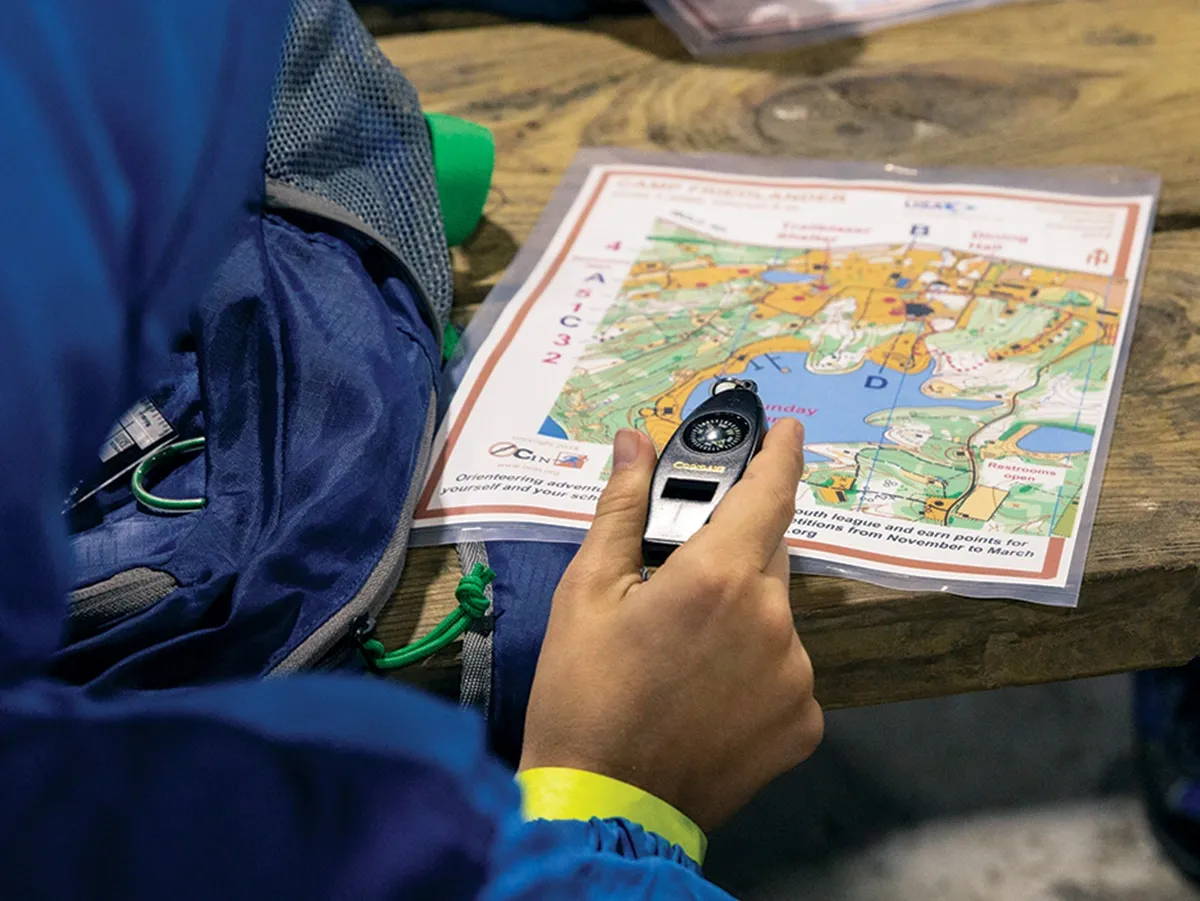Orienteering

Orienteering can be described as adventure running. Proficiency in Orienteering requires endurance, intelligence, and physical and mental toughness. It is a timed event in which the orienteer navigates different terrains using a map and compass and making decisions while running as he or she collects a series of control points. What does this mean for cadets?
Orienteering is a great way to learn map and compass skills and it requires limited resources.
Orienteering is suitable for both male and female cadets of all ages; any skill level and physical ability, orienteering allows any cadet to participate. I suggest first time orienteers go a fast as they want. This could mean a walk in the woods carefully map reading and route finding to a rapid run along a route collecting controls as fast as they can go. Each cadets set his or her own pace and objectives for each race.
The goal of an orienteer is to select the fastest route between a series of control points in the terrain using your map and compass. Areas selected for orienteering meets can be both wooded and open land with landmarks such as fences, trails, roads, hills, spurs, and reentrants.
Orienteers start at intervals and following is not allowed. you are given a description sheet (which provides information about each of the control points) with control codes appearing on the control card to be punched as each control point.
Orienteering maps are very precise and accurate topographical maps. The maps do not have grid lines or text written on the map. Folding and holding the map becomes an essential skill. Thumbing the map is a technique used to identify your position on the map and moving it along the map as you run across the terrain.
Orienteering meets are a scored event, the orienteer is faced with a fixed time limit. Within a certain amount of time they must visit as many controls as possible. Normally there are more control points then time. Each control point has points assigned to them - The control points that are farther away and more difficult to find receive more points. The orienteer or team with the most points with in the time limit wins and those taking more than the allowed time have points deducted from their total score.
For more information and resources visit the Canadian Orienteering Federation's website www.orienteering.ca.